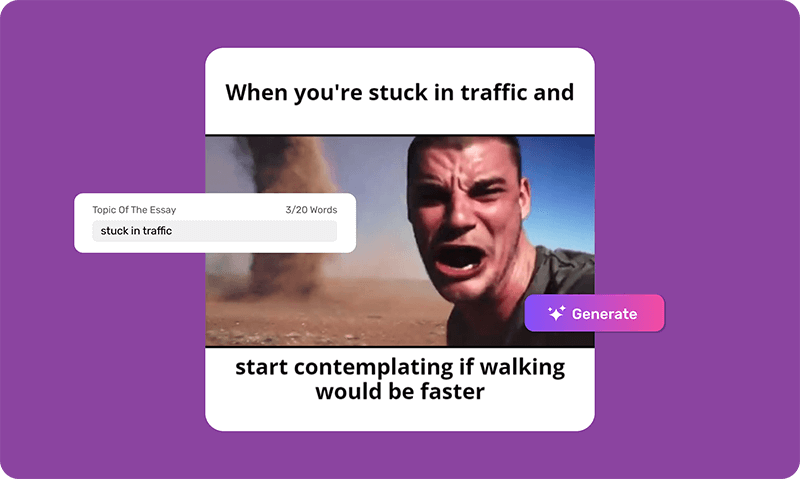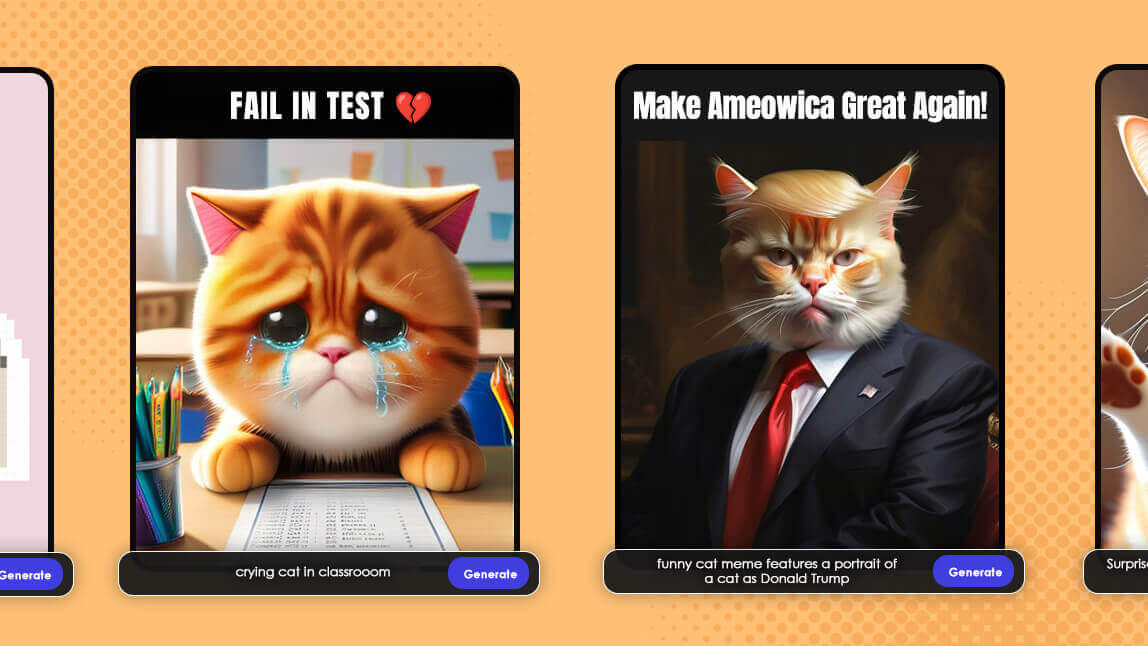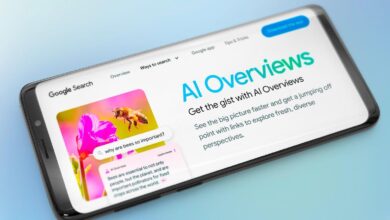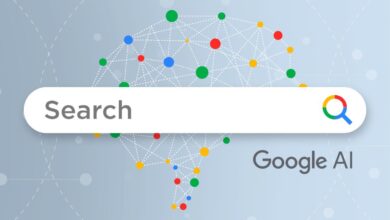Explaining Instagram’s Viral AI Meme Generator Phenomenon
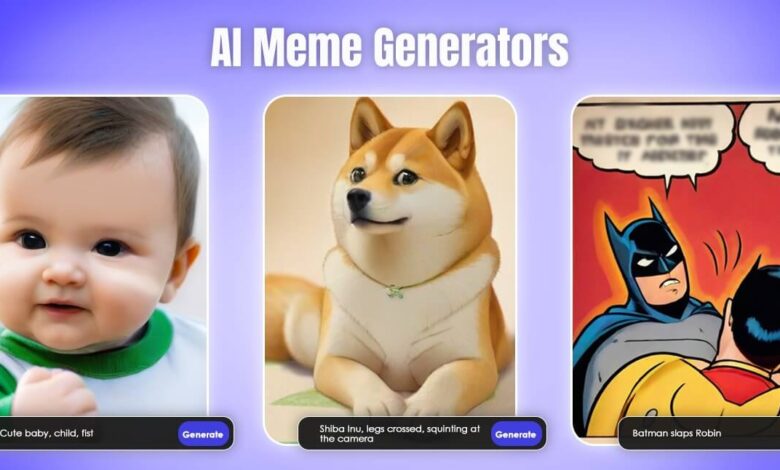
The digital landscape is perpetually evolving, but few things capture the collective online consciousness quite like a perfect meme. In 2023, Instagram launched a feature that seamlessly merged the universality of meme culture with the burgeoning power of artificial intelligence, creating a veritable tsunami of user-generated content. This feature, known colloquially as the “AI Meme Generator,” is not just a tool; it’s a cultural moment, a case study in virality, and a glimpse into the future of social media interaction. This in-depth analysis will deconstruct this phenomenon, exploring its mechanics, its explosive appeal, the technology that powers it, and its profound implications for creators, marketers, and the platform itself.
A. Deconstructing the Hype: What Exactly Is This AI Tool?
First, it’s crucial to understand what we’re discussing. Instagram itself doesn’t officially call it an “AI Meme Generator.” The feature is an integral part of Instagram’s AI Studio, a suite of tools currently in testing that allows creators to build AI-powered interactions. The meme generator specifically is accessed through Direct Messages (DM).
When a user messages a creator who has access to AI Studio, they might see an option to “Chat with [Creator’s AI].” This AI, trained on the creator’s public persona, past comments, and content, can then generate humorous, self-deprecating, or observational text-based memes. The user simply provides a prompt or a theme, and the AI responds almost instantly with a meme, typically in a classic image macro format (e.g., a witty caption over a static background) but uniquely tailored to the creator’s voice.
B. The Anatomy of a Viral Trend: Why It Took Over Your Feed
The success of this feature wasn’t accidental. It was a perfect storm of several key factors that leveraged deep-seated online behaviors.
A. The Power of Personalization and Parasocial Interaction: Unlike generic meme generators, this tool creates content that feels intimately connected to a specific creator. Fans aren’t just getting a meme; they’re getting a meme from their favorite influencer, as if the influencer themselves had personally crafted a joke for them. This fuels parasocial relationships the one-sided emotional connections fans form with online personalities making the interaction feel uniquely personal and shareable.
B. The Novelty of AI and Co-Creation: Artificial intelligence remains a source of fascination and curiosity for the general public. This tool demystifies AI, presenting it not as a job-stealing menace but as a playful, creative partner. Users become co-creators, providing the initial idea and letting the AI (and by extension, the creator’s persona) execute it. This interactive element is far more engaging than passively consuming content.
C. The Built-in Distribution Engine: Instagram’s algorithm prioritizes content that keeps users on the platform. The meme generator inherently creates this content. The process of generating the meme happens within DMs, but the final product is a highly shareable image perfectly formatted for Stories and Feed posts. This creates a powerful feedback loop: someone sees a funny AI meme on a Story, goes to the creator’s DM to generate their own, and then posts their result, thus advertising the feature to their own followers.
D. Low Effort, High Reward: For both creators and fans, the barrier to entry is incredibly low. Fans don’t need advanced editing skills; they just need a funny idea. Creators, once set up, have an automated engine producing a constant stream of engaging, on-brand content without lifting a finger. This efficiency is a major driver of its adoption.
C. A Step-by-Step Guide: How to Use the AI Meme Generator
While access is still being rolled out, here’s how the process works for those who have it.
For Creators:
A. Eligibility Check: The feature is currently in beta, primarily available to a select group of creators in the United States. Eligibility is often based on account size, engagement rates, and past compliance with community guidelines.
B. Accessing AI Studio: Eligible creators will find the “AI Studio” option in their professional dashboard within the Instagram app.
C. Training the AI: The creator will be prompted to train their AI model. This involves answering questions about their interests, sense of humor, and defining the boundaries of what the AI should and shouldn’t say. It also pulls from their public data to mimic their communication style.
D. Activation: Once set up, the creator can activate their AI. Their followers will then see the option to interact with it via DM.
For Users/Fans:
A. Finding a Creator’s AI: Navigate to the DM of a creator who has enabled the feature. A noticeable “Message AI” button will appear.
B. Initiating the Conversation: Tap the button and start the chat. You can greet the AI or go straight to your request.
C. Crafting Your Prompt: The key to a good meme is a good prompt. Be specific! Instead of “make a meme about being tired,” try “make a meme about the struggle of waking up for an 8 AM meeting, in the style of [Creator’s Name].”
D. Generation and Shareability: The AI will process your request and generate an image meme within seconds. The interface provides easy one-tap options to share the meme directly to your Story, adding a layer of attribution back to the creator’s AI.
D. The Engine Room: The Advanced Technology Powering the Memes
While Meta hasn’t revealed the exact proprietary models, we can infer the technology based on existing public AI systems. This isn’t a simple script; it’s a sophisticated blend of several AI disciplines.
A. Large Language Models (LLMs): At the heart of the generator is a powerful LLM, similar to OpenAI’s GPT-4. This model is responsible for understanding the user’s prompt, accessing the creator’s trained personality data, and generating the witty, contextually appropriate caption text that forms the joke.
B. Natural Language Processing (NLP): NLP subfields enable the AI to parse the nuances of the user’s request, including sentiment, humor intent, and cultural references. It deconstructs the prompt to understand what the user is truly asking for.
C. Computer Vision and Image Synthesis: While the current memes are primarily text-based, the image generation component likely relies on a technology similar to stable diffusion or DALL-E. However, instead of generating photorealistic images from scratch, it’s probably tuned to create the classic, minimalist formats of image macros (e.g., the “Distracted Boyfriend” template, the “Woman Yelling at a Cat” template) with the new custom text seamlessly overlaid.
D. Fine-Tuning and Personalization: This is the most critical technical aspect. The base LLM is not generic; it undergoes a process called fine-tuning. It’s trained on a specific dataset unique to each creator: their captions, their comment replies, their bio, and their stated preferences. This teaches the model to mimic the creator’s linguistic patterns, humor, and catchphrases, making the output convincingly “theirs.”
E. Beyond the Laughs: Serious Implications for the Digital World
The ripple effects of this seemingly frivolous tool are significant and will shape the future of digital content.
A. The Future of Fan Engagement: This moves engagement beyond simple likes and comments into dynamic, personalized conversations. It offers creators a way to scale one-on-one interaction, making every fan feel heard while saving the creator invaluable time. This could become a standard expectation for mid-to-top-tier creators.
B. A New Frontier for Brands and Marketing: Imagine messaging Nike’s AI to generate a custom meme about your personal running struggle, or contacting Wendy’s AI for a savage, on-brand roast. Brands can leverage this to create deeply engaging, viral-ready marketing campaigns that feel personal rather than corporate. It’s the ultimate fusion of brand voice and interactive marketing.
C. Ethical Considerations and Potential for Misuse: The technology is not without its perils.
-
Impersonation and Misinformation: A well-trained AI could be used to impersonate a creator, spreading false information or scams.
-
Data Privacy: The process of training the AI on a creator’s data raises questions about data ownership and usage.
-
Harmful Outputs: Despite safeguards, AIs can still generate biased, offensive, or inappropriate content. Ensuring these tools are safe and respectful is an ongoing challenge.
-
Creator Burnout: The AI’s constant output could create an expectation for 24/7 engagement, adding a new layer of pressure on creators.
D. The Evolution of Content Creation: This tool signifies a shift towards AI-assisted creation. The creator’s role evolves from sole content producer to curator, editor, and personality trainer for their AI. The human provides the creative vision, brand identity, and emotional intelligence, while the AI handles the labor-intensive execution. This symbiotic relationship will define the next era of digital content.
F. Crafting the Perfect Prompt: A User’s Guide to Maximum Hilarity
The quality of the meme is directly proportional to the quality of the prompt. Here’s how to master it.
A. Be Specific and Detailed: Vague prompts yield generic results. Include context, scenarios, and emotions.
B. Reference the Creator’s Niche: If the creator is a gamer, ask for a meme about a specific game. If they’re a chef, ask for a meme about a kitchen disaster.
C. Invoke Classic Meme Templates: Ask the AI to create a meme “in the style of” or “using the format of” a well-known template (e.g., “Drake Hotline Bling,” “Two Buttons,” “Change My Mind”).
D. Iterate and Refine: Don’t stop at the first result. If it’s not quite right, give the AI feedback like “that’s good, but make it even more dramatic” or “use more sarcasm.”
G. Conclusion: More Than a Gimmick, A Glimpse into the Future
Instagram’s AI Meme Generator is far more than a fleeting trend. It is a masterclass in product design that successfully harnesses the power of AI, personalization, and community-driven virality. It demonstrates a future where our digital interactions are increasingly conversational, personalized, and co-created with intelligent systems. While it brings laughter and connection, it also prompts important conversations about ethics, authenticity, and the evolving relationship between humans and the technology we create. As this technology matures and becomes more widely available, it will irrevocably change how we create, consume, and think about content on social media and beyond. The meme is not just the message; the meme is now the medium for the next digital revolution.

